The capital of Cyprus has its unique character and significantly differs from the resort towns scattered around the seashore. The city is surely visited by tourists, but, unlike Limassol or Larnaca, where the service sector provides permanent employment for many citizens, Nicosia is by no means a tourist resort. Here’s where Cyprus’s fates are decided, government buildings, embassies, headquarters and offices of different companies are located. Cyprus has milder taxation, which makes the island more attractive for foreign companies, as they pay fewer taxes here, while they would pay much more in their homeland. No wonder Cyprus is often called a tax haven and an offshore paradise. However, tax legislation has lately started to become harsher, which was demanded by the EU.
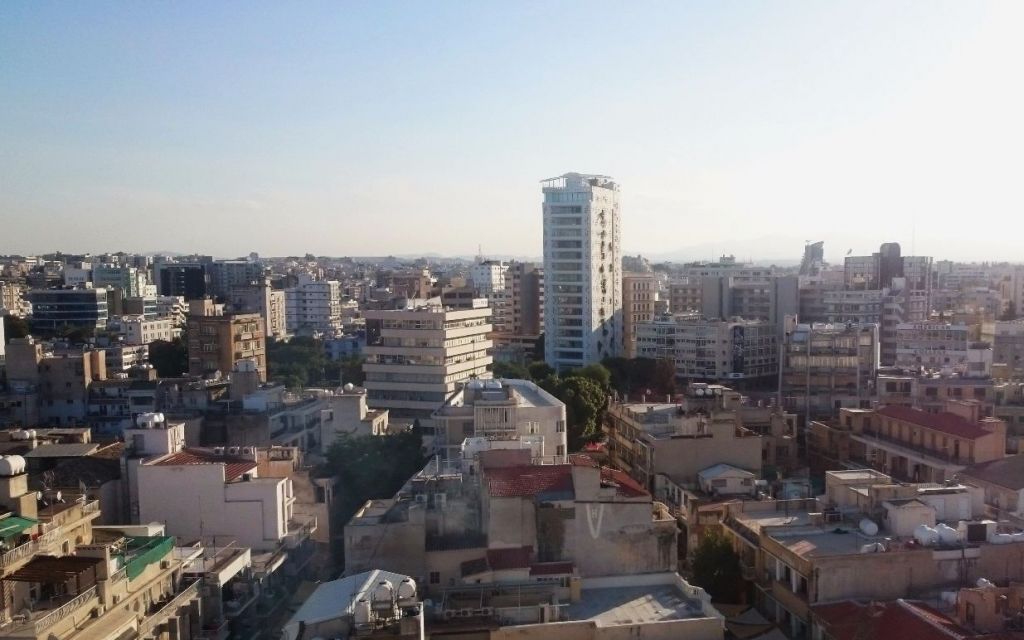
Panoramic view of Nicosia – the controversial capital in which ancient Greek buildings coexist with modern skyscrapers
The foreigners that live in the capital are predominantly the ones who came here either to study or to work.
There are a lot of foreign students in Cyprus, because tuition is less expensive here than in many other European countries, while the quality of education is high. Foreign students also appreciate the opportunity to work (part-time) using a student visa.
In summer, especially during the first half of August, it’s very hot in Nicosia. The city turns into scorching concrete jungles, a huge heated frying pan. That’s why during this time the capital becomes literally deserted, the life here stops – almost all administrative institutions and shops close down for holidays while people, seeking the cool, strive to flee from the city. Everyone wants to go closer to the sea or up to the mountains to take a breath of fresh air filled with a conifer fragrance.

On one of the unbearably hot summer days …
If you are fond of extreme activities or, for some reason, have to stay in Nicosia at the beginning of August, you will not only sense the heat with your skin, but also see and hear it. When the sun is at its zenith, you can observe the wavering heat haze, and the vibrating scorching air is so thick and dense, it seems you can slice it into pieces.
There’s deafening silence around. There are neither people nor cars. The only inhabitants of the city staying active during the unbearable heat are cicadas who sing their song sitting on all trees and bushes in the area. The rays of the remorseless sun turn the capital into a post-apocalyptic film set.
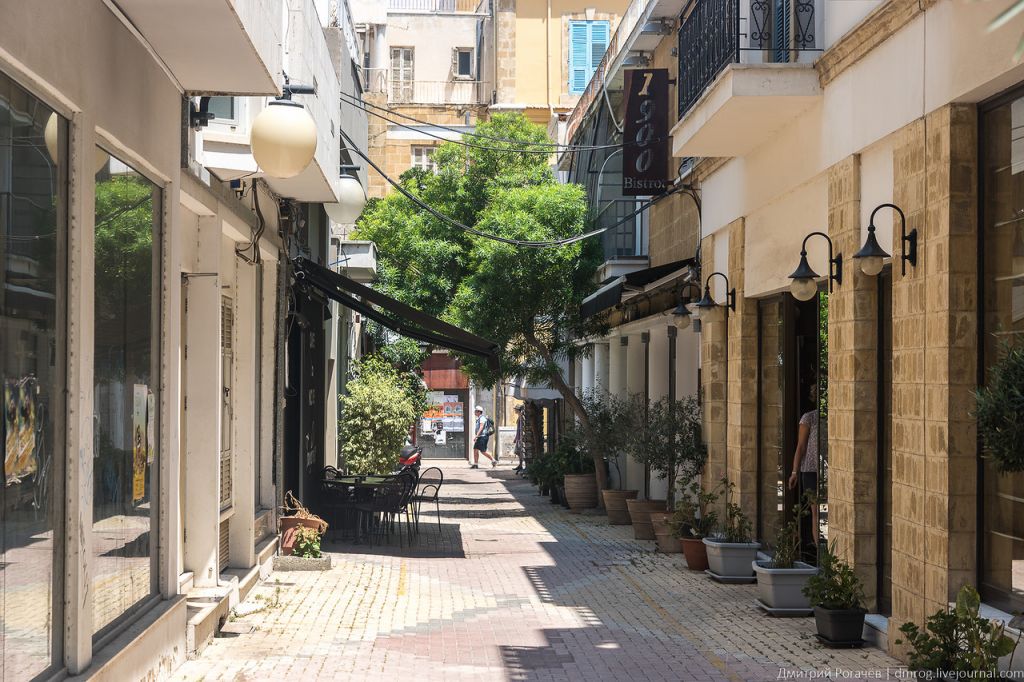
In the midday heat, the central streets are completely empty.
Except for the heat time, Nicosia is quite a lively city. We urgently moved here from Limassol when we found out that Helen would have to undergo an unscheduled C-section due to complications, after which our babies would be staying in hospital for around a month and we would need to visit them every day.
We found a lovely house in Aglandjia through AirBnb. It’s a quiet district on the outskirts of the city, convenient for us, because we were able to reach the Makarios Hospital from it without getting stuck in traffic jams. Later, when we moved to Larnaca and the children grew up a bit, we started to travel around Cyprus together with them, coming to Nicosia a couple of times a week to take a walk or go shopping.
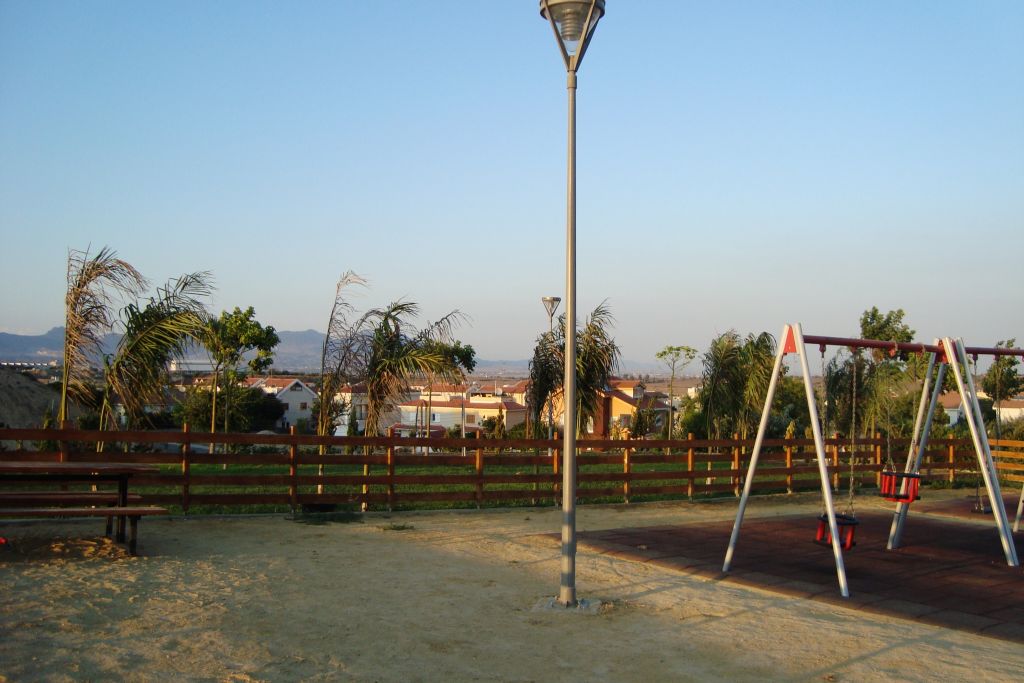
One of the mini-parks in the Anglaja area
Historic Nicosia
Nicosia is proud of its exciting and ancient history. There are areas where you can vividly experience the bygone times and tragic events of the recent history. To feel it, you don’t need to read travel guides or study reference books. Just go for a walk around the city and see everything yourself.
Nicosia has become the last European capital divided into two independent parts after the Berlin Wall was destroyed and Berlin was reunited. The capital of Cyprus was divided in 1974 after the war between Turkey and Greek Cypriots. However, since 2007, the border between the Cypriot and Turkish parts of the city has become more nominal and lost its former strictness. Now both locals and tourists can cross the border from the south to the north through special checkpoints. You’re given a free visa, your passport data is put into a computer database, and in a couple of minutes you can proceed to the other part without hindrance.
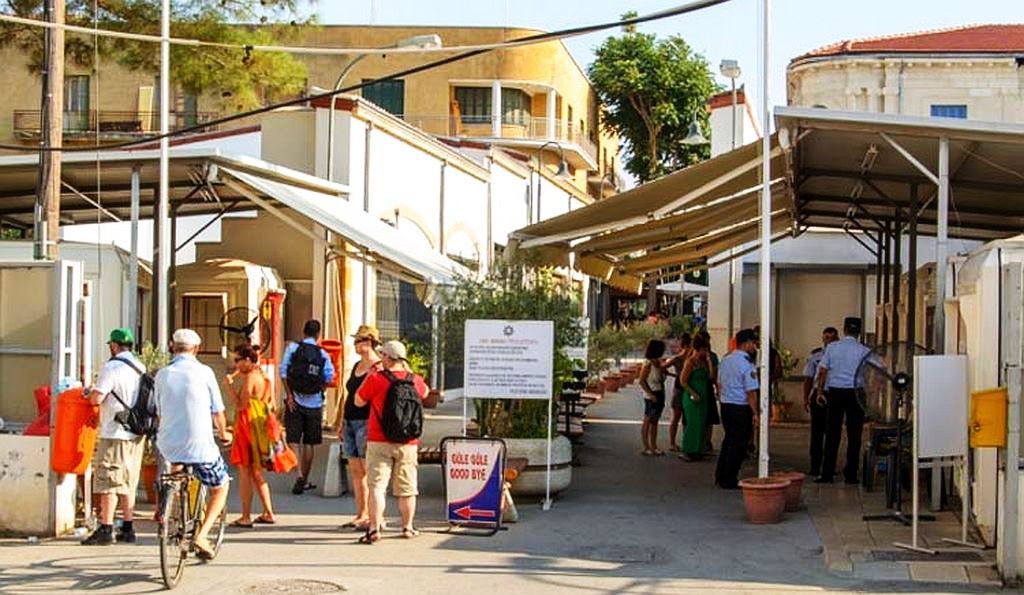
Passport control at the border of North and South Cyprus in Nicosia
The Green Line – the UN Buffer Zone – divides the Turkish and Greek parts of Nicosia. If you walk along it from Ledra Street to the Famagusta Gate, you can literally dive into history, as if the armed clashes of the 1970s occurred just yesterday!
The barricades and arrowslits remained intact. The streets leading from one part of the city to the other are blocked with metal barrels that are roughly welded to each other. The barrels are twined with barbed wire. They are painted in coloured paint, which was probably made to mask the dismal picture. However, the walls of houses give away the truth – there can still be seen the traces of destruction and bullet marks. If you want to feel the past events to the fullest, you can climb to the roof and assess the scale of that time street war from a height. The soldiers protecting the border are still standing here, though today they are more peaceful and don’t banish tourists as they used to.
There are few places for walking with children in the city, so we sometimes went to a park located near Nicosia. Here you can go and run, and look at the animals in the zoo!
The heart of the capital is the Old Town lying behind the high ramparts. There used to be a medieval fortress erected by the Franks and completely rebuilt by Venetians in the 16th century. In fact, they built a new construction designed to withstand a new powerful weapon – artillery. The three-kilometre (1.8-mile) ramparts around the Old Town and eleven bastions had been built for three years with the help of noble Venetian families. A moat was dug around the fortress and filled with water. The bridges leading to the gate were constructed over the water. Such a strong fortress was needed for defence from the Ottoman Porte.
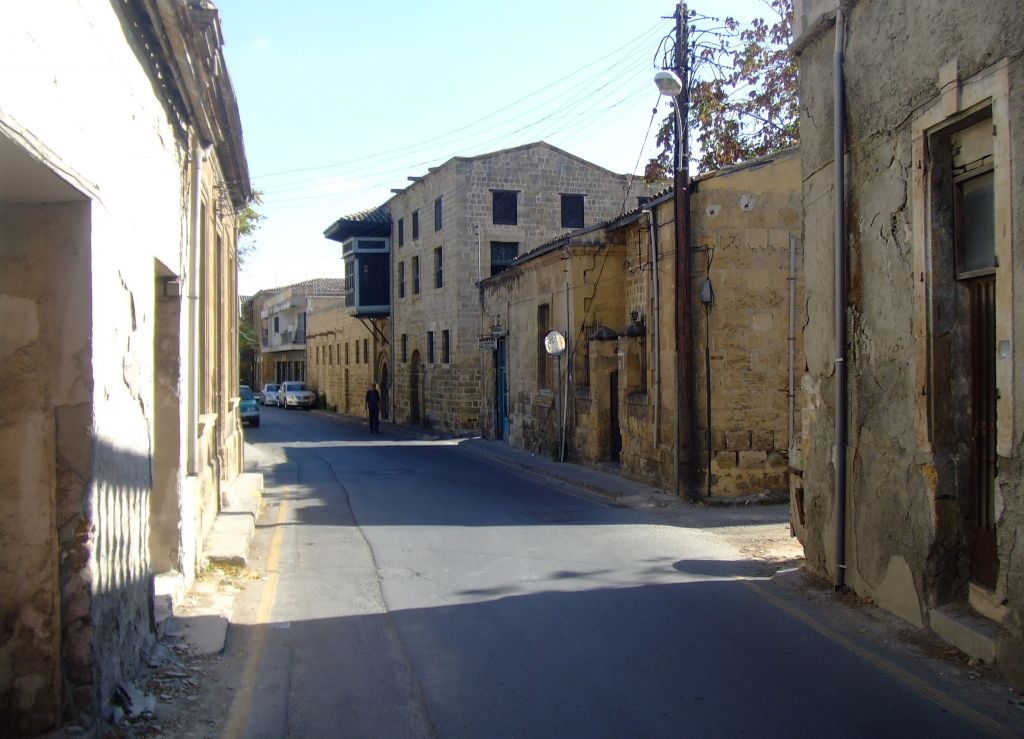
The history of Nicosia, a city full of opposites, is preserved in the Old Quarters …
As a matter of fact, Cyprus had belonged to Venetian doges since the late 15th century. The rule of the Most Serene Republic of Venice – it used to be proudly called like this – largely formed the Nicosia we know today.
While Venetians were good merchants, they were quite bad at fighting, so they often hired soldiers to their army and fleet. However, even the powerful defensive fortifications didn’t manage to help Nicosia. In 1571, the Turkish took the city by storm and without much effort, and the fortress gave in almost without a fight. The era of the Turkish rule had begun which had been lasting for long 300 years.
The next country that found the island a coveted area due to its location was the United Kingdom. The fate of Cyprus was decided by large and powerful states – France interfered, but the main actors were Turkey and Russia that were at war in 1877-1878. The UK supported Turkey, but it had its reasons for that. Britain needed Cyprus, as it was situated on the way to the Middle East, the Suez Canal, and India that was a part of the British Empire. As a result, in 1878, the British High Commissioner became the ruler of Cyprus, although, officially, the country continued to be a part of the Ottoman Empire to make the Turkish calm down. Cyprus became an official British colony in 1915 and stayed under the British rule until 1960.
Maybe in a few years Michael Jr. and Robert will read the history of Cyprus with same enthusiasm.
But let’s return to present times. The Old Town and its walls remained intact during the colonial period, when Cyprus was ruled by the English, and further on till our days. The district hasn’t changed much for centuries. When we were walking in the centre of the Old Town, in the southern part of it, we came across a lot of artisanal workshops that are interesting to drop in to observe artisans working. It’s exciting to walk towards the Famagusta Gate, as there are craftsmen’s and artists’ workshops along the way.
You can find a great deal of restaurants here opening only in the evening when the summer heat subsides.
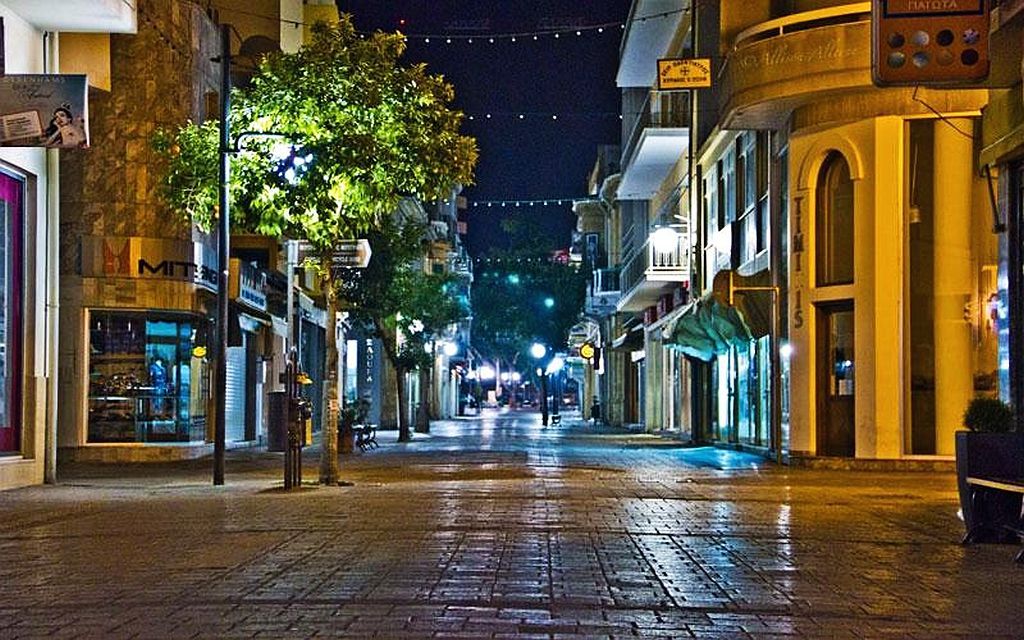
One of the quarters of the old city at night
The ramparts – sometimes called Venetian Walls – surrounding the Old Town have three gates each of which is interesting and unique. Both then and now, it’s possible to pass through the gates through the ramparts.
The Famagusta Gate is the most famous. It remembers all major historical events happening here since the 16th century. Wayfarers went through a kind of a long wide corridor in the wall leading to a large massive inner gate that performed an additional defensive role. The dim light comes in here through special holes in the dome.
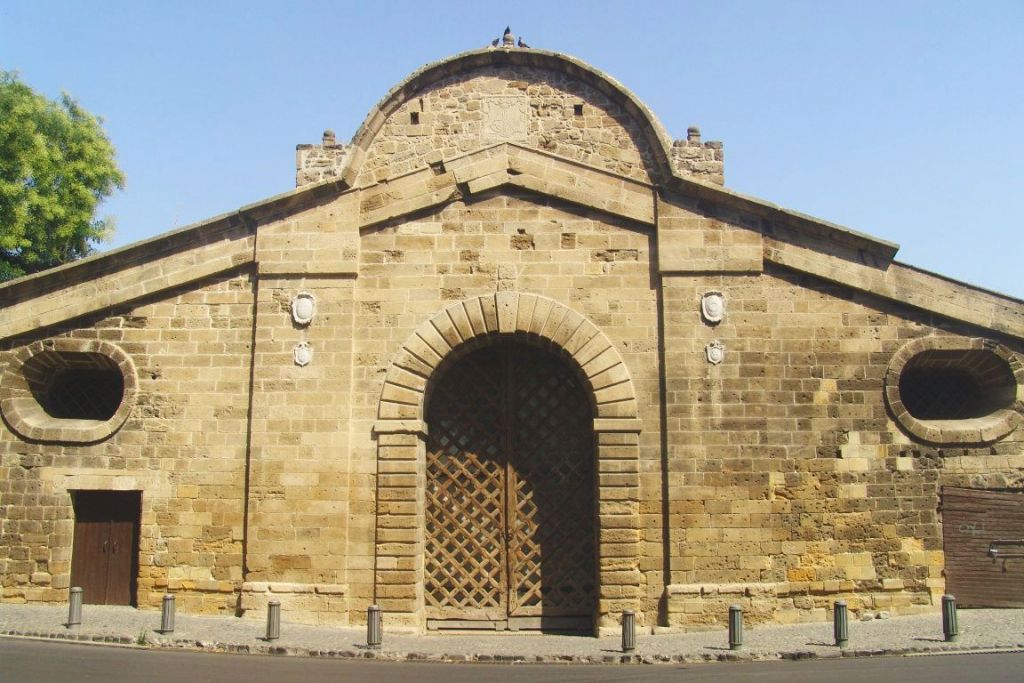
Famagusta Gate – Powerful Inaccessibility
It’s curious that during the rule of the Ottoman Empire, only the Turkish could ride through the gate on a horse, while the natives, Orthodox Christians, and foreigners could go only on foot.
Time and burning sun were ruthless and unrelenting towards the landmark, so it had to be renovated in 1981, after which various cultural events started to be held near the gate.
As for the Kyrenia Gate, only the arch and the building where a guardhouse used to be are left now. The gate is on the Turkish part, so you need to cross the border to get to it.
The Paphos Gate is the smallest and least remarkable. It was an ordinary passage in the wall that was even rebuilt, because it became too narrow with time. To increase the traffic capacity of the only road leading from Nicosia to the west, the gate was just broadened. Today, there’s a local patch of civilization spreading out near the Paphos Gate – the central theatre, parliament building, a wonderful small park with a little zoo.
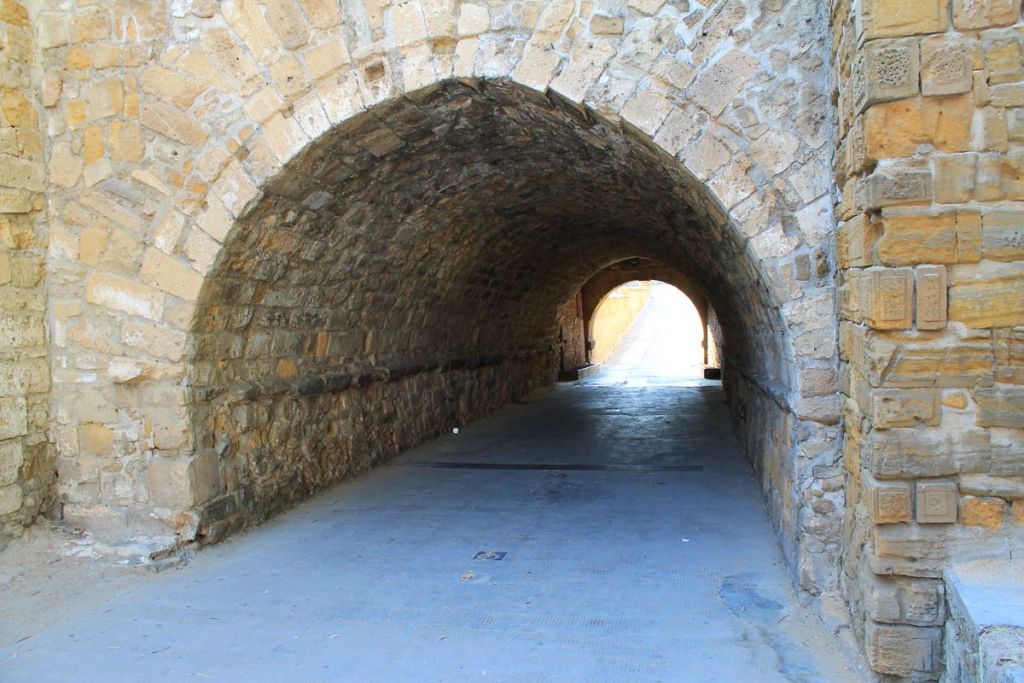
ВOn the whole, the Old Town is a pedestrian district of Nicosia. It’s nice and interesting to walk here. The streets are clean and neat. There’s a large football field nearby. And farther ahead Ledra Street, the main thoroughfare in Nicosia, begins.
It’s sort of a capital centre where tourists are always walking. The street is crammed with various boutiques, restaurants, and cafes. You can even find ice cream stalls here, many of which have existed since the 80s! Even the harsh economic crisis bursting out in Cyprus in 2013 didn’t manage to extinguish the sturdy flame of life on Ledra.
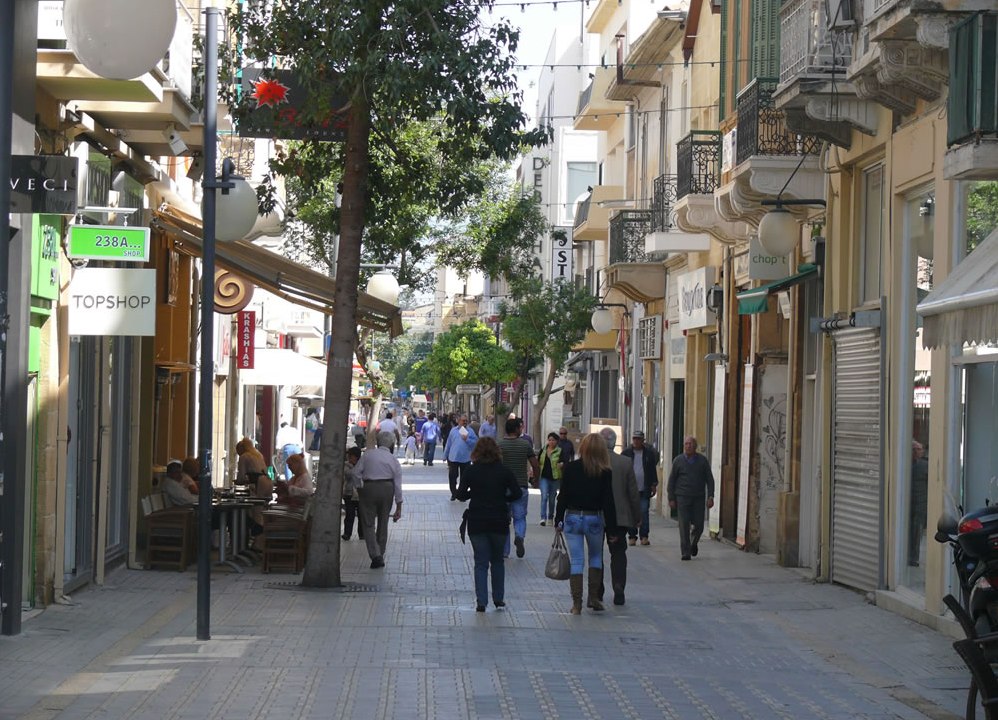
Life on Ledra always boils up!
The New Town was gradually growing behind the Old Town walls. That’s how a kind of a second ring of the capital was formed – the first ring is represented by the ramparts. The third ring is modern buildings, private houses, and villas located in the distance from the Old Town.
The central street of the New Town is Makarios Avenue. It used to be a prosperous street swathed in posh luxurious shops and restaurants, but the 2013 economic crisis considerably influenced the state of the street. A lot of shops and boutiques went bust and closed down. While Makarios Avenue was in decline, Ledra Street became the major one in Nicosia. Now it’s the liveliest and most popular street attracting crowds of tourists every day.

Closer to Christmas it’s time to start thinking about gifts! Kids grow up and know more and more in shopping!
Nevertheless, Makarios Avenue is still an important landmark in winter, during Christmastime. It turns into a pedestrian street, where various merry-go-rounds, kiosks with hot food and drinks appear and music thunders. It’s very fun and cheerful here!

Somewhere in the IKEA open spaces in Nicosia – there the boys were so interested that they enthusiastically researched the range for a couple of hours

And when they were tired, they just rested on soft pillows right there in the exhibition hall.
The Turkish part of the “double city” – Nicosia. Part 2
Where to walk and where to eat in the capital of Cyprus – Nicosia. Part 3

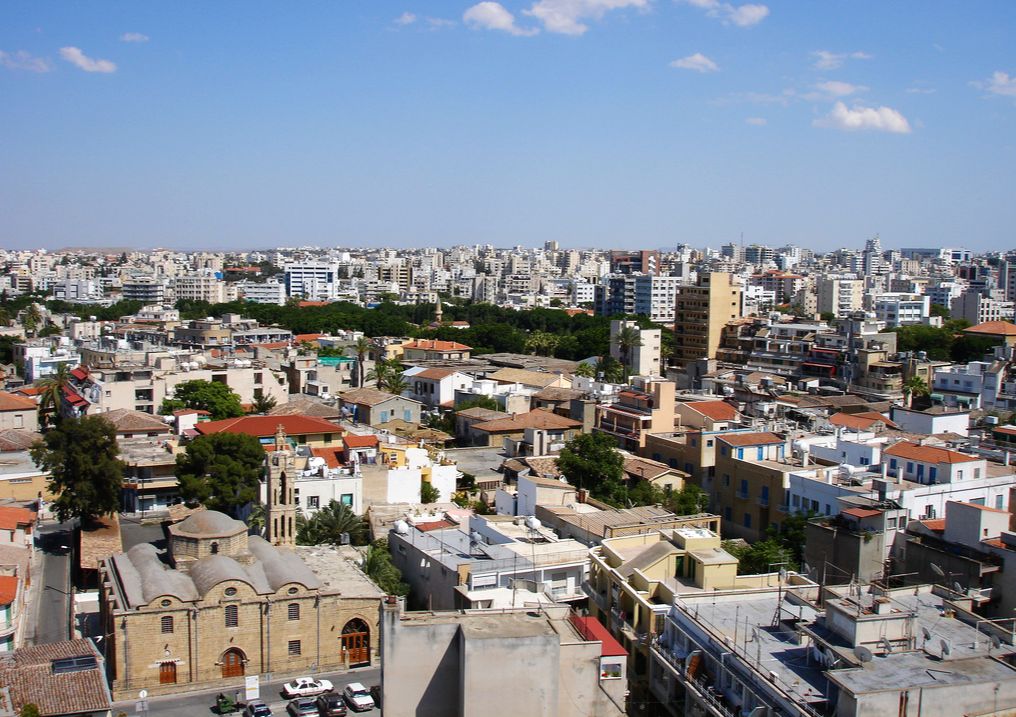
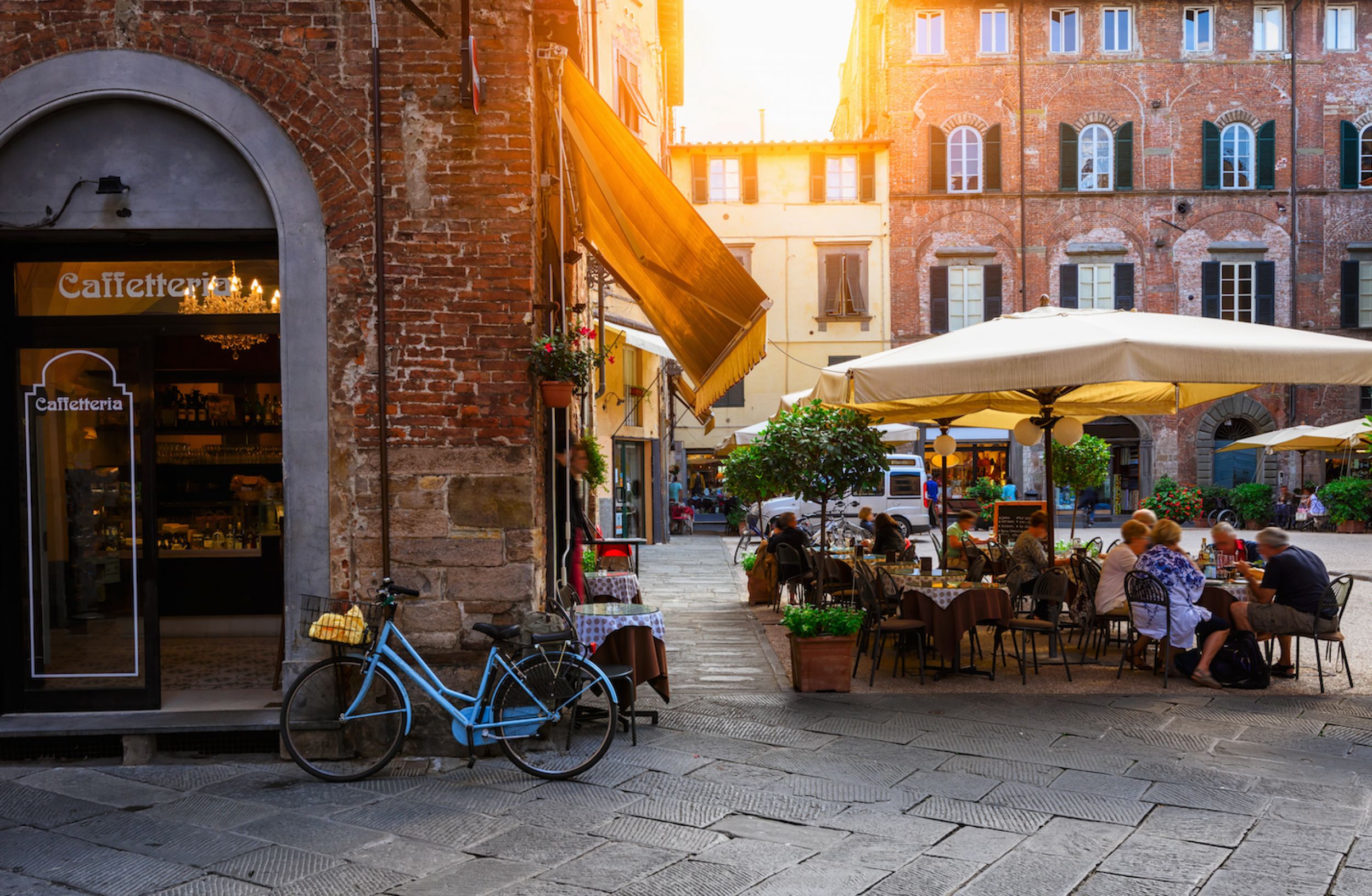
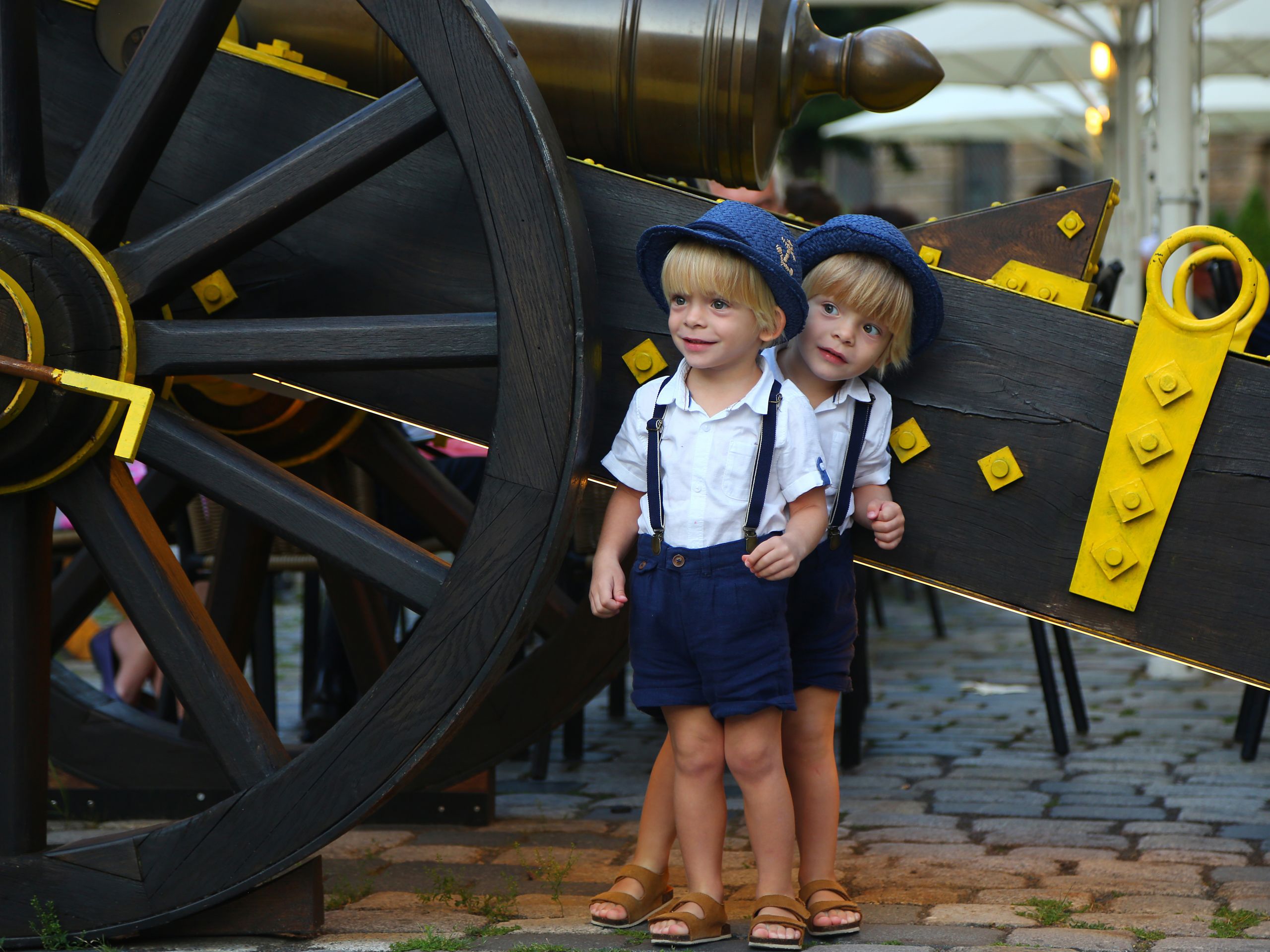


Leave A Comment